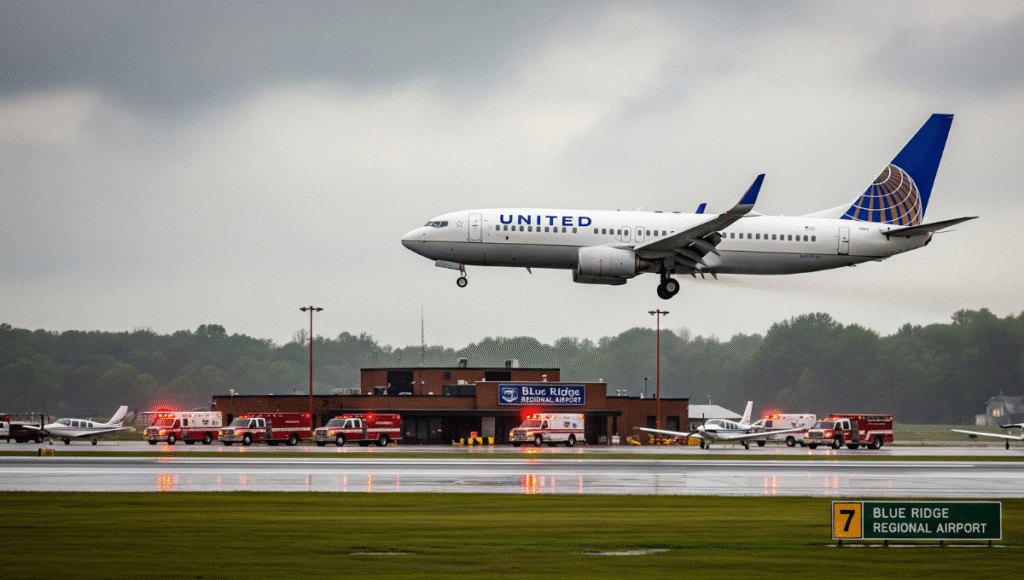Although flying is considered among the safest ways to travel, unforeseen situations can arise that demand pilots and airlines to act swiftly with safety as the top priority. One such situation is an United Airlines Flight UA770 emergency diversion, where the aircraft had to alter its course and land at an alternate airport instead of its original destination. In this article, we explore the full story, the possible reasons behind such diversions, and what passengers typically experience when this happens.
Understanding an Emergency Diversion
An emergency diversion takes place when an aircraft is unable to reach its planned destination safely and is required to land at an alternate airport instead. These diversions are not uncommon in aviation, and they are primarily precautionary measures taken to protect passengers, crew, and the aircraft. While the term may sound alarming, diversions are part of standard aviation protocols, handled with strict professionalism and efficiency.
Why United Airlines Flight UA770 Diverted
Although the exact cause of the United Airlines Flight UA770 emergency diversion can vary depending on the incident date, the most common reasons such flights are diverted include:
-
Medical Emergencies – If a passenger or crew member experiences a serious medical condition mid-flight, the aircraft will divert to the nearest airport with adequate medical facilities.
-
Technical or Mechanical Indications – Aircraft are equipped with highly advanced monitoring systems. If any system irregularity is detected, the crew may choose to land early for a precautionary inspection.
-
Weather Conditions – Severe thunderstorms, poor visibility, or strong winds can make it unsafe to continue to the scheduled destination.
-
Security Concerns – Although rare, certain security-related issues may require an immediate diversion.
-
Airport Operational Issues – Runway closures, congestion, or other disruptions at the destination airport may force a diversion.
The Decision-Making Process
When an issue arises, the flight crew and airline operations center work together to make quick but calculated decisions. The selection of a diversion airport depends on a range of critical factors, including:
-
Distance and time to alternate airports
-
Weather conditions at potential diversion points
-
Availability of medical, security, or maintenance support
-
Runway length and operational readiness of the airport
The captain has the ultimate authority to decide, with air traffic control and airline dispatch providing real-time support.

What Passengers Experienced
For travelers on United Airlines Flight UA770, the diversion was likely an unexpected turn of events. Here’s what passengers typically go through in such situations:
-
Early Cabin Preparation: Passengers are asked to fasten seat belts, service is paused, and all cabin items are secured.
-
Clear Announcements: Pilots and flight attendants usually explain the situation calmly to keep everyone informed.
-
Safe Landing: Even during urgent diversions, the crew aims for a controlled and normal landing.
-
On-Ground Handling: Depending on the reason, medical teams, maintenance crews, or security personnel may meet the aircraft immediately after landing.
-
Rebooking and Assistance: The airline arranges onward travel, rebooks missed connections, and may provide hotel or meal vouchers if the delay is extended.
Safety Comes First
It is important to remember that diversions are not a sign of danger, but rather proof of how seriously airlines and aviation authorities prioritize safety. Modern aircraft are designed with layered backup systems, and flight crews undergo rigorous training to manage a broad range of in-flight situations. By choosing to divert, the crew ensures that every passenger reaches their destination in the safest possible manner—even if plans are temporarily disrupted.
Lessons for Travelers
For travelers, the United Airlines Flight UA770 emergency diversion highlights several essential tips to keep in mind while flying:
-
Always keep essential medications and valuables in your carry-on.
-
Download and use the airline’s mobile app to stay updated on rebooking or schedule changes.
-
Keep calm and follow crew instructions during irregular operations.
-
Have flexibility in your travel schedule when possible, as diversions may cause unexpected delays.
Conclusion
The United Airlines Flight UA770 emergency diversion illustrates how modern aviation systems are designed to prioritize human life and safety above all else. While diversions can be inconvenient, they highlight the professionalism of airline crews, the efficiency of air traffic controllers, and the resilience of the global aviation network. For passengers, the experience may be surprising, but it ultimately reinforces a reassuring truth—safety always comes first in the skies.
